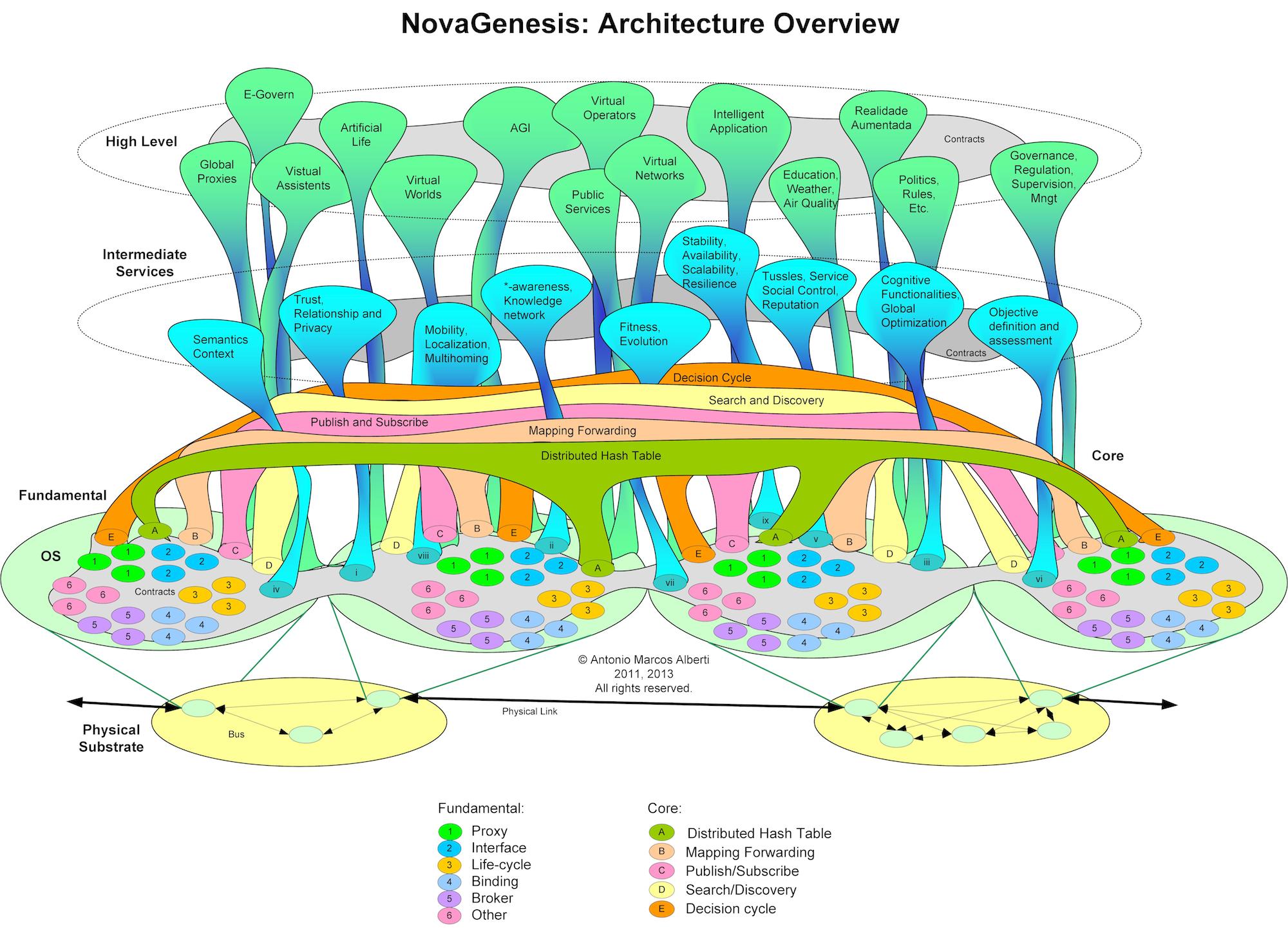NovaGenesis: Convergent Information Architecture
NovaGenesis is a hybrid name-centric, service-centric, information-centric, host-centric, software-defined, self-organizing, mobile-friendly architecture. It can be seen as a Future Internet architecture.
Its objective is to create a clean slate architecture for new generation information exchanging and processing. It can be seen as a Future Internet initiative. It aims at creating a new environment for convergent technology evolution. It started in 2008 at Inatel, Minas Gerais, Brazil.
NovaGenesis project aims at creating a new ICT environment to support the full, convergent, and accelerated technology evolution we are experiencing today.
NovaGenesis supports the idea that all technologies are converging to a radical new, worldwide, overspread, convergent architecture for information exchanging and processing.
NovaGenesis believes that a clean slate architecture is required to create the ideal environment to continue technology evolution in a more cohesive, synergistic, efficient, flexible, and accelerated way.
NovaGenesis means "new beginning". The name came from the idea that a radical new environment for ICT can create a new beginning for digital technology evolution. We are just in the beginning of the information age!
NovaGenesis adopts the Internet of Information and Services (IoIS) paradigm, where information-centric and service-centric approaches are combined to integrate information treatment, storage, and exchanging.

The Figure above illustrates NovaGenesis digital business ecossystem. It is logically separated on several portions or regions. At the bottom region a complete ecossytem of basic (simple) services provide the fundamental communication, storage, and processing capabilities. Those basic services are combined to support a core portion, where some key distributed systems were implemented. Over these systems, a set of intermediate distributed systems provide more sophisticated services like knowledgment and trust networks formation, as an example. The upper portion of the achitecture is inhabited by the final high level applications, such as ICT infrastructure management, regulation, supervision, and governance.
(c) Alberti, Inatel, 2012.
Highlighting the Proposal by an Example

Two services (1 and 2) are using NovaGenesis components inside a domain. (1) Service 2 builds four bindings. One relates its ID to a descriptor. The others relate its ID to the names “Message”, “Server”, and “Message Server”. Then, Service 2 sends all those bindings to be published; (2) The PSS forwards the bindings to the domain GIRS; (3) The GIRS selects the appropriate HTS to store them; (4) Service 1 asks the SDS about a partner to compose an application that requires message forwarding. Let’s assume it queries “Message Service”; (5) The SDS subscribes the names “Message”, “Service”, and “Message Service” via PSS; (6) The PSS forwards to GIRS; (7) The GIRS discovers the adequate HTS where they could be stored. (8) The SDS receives only the existent bind- ing between Service 2 ID and the name “Message”. It subscribes this ID and discovers Service 2 descriptor. It subscribes the descriptor and verifies if it fits on the “Message Service” context; (9) It answers the Service 1 with the Service 2 binding. After that, the Service 1 publishes an SLA offer (not shown in figure) and the PSS notifies the Service 2 about this new publication. The Service 2 subscribes the SLA and the PSS notifies the Service 1 about this subscription. If the SLA is accepted, the Service 2 publishes it again with its own ID and asks PSS to notify the Service 1. This indicates that they both agreed.
(c) Alberti, Inatel, 2012.